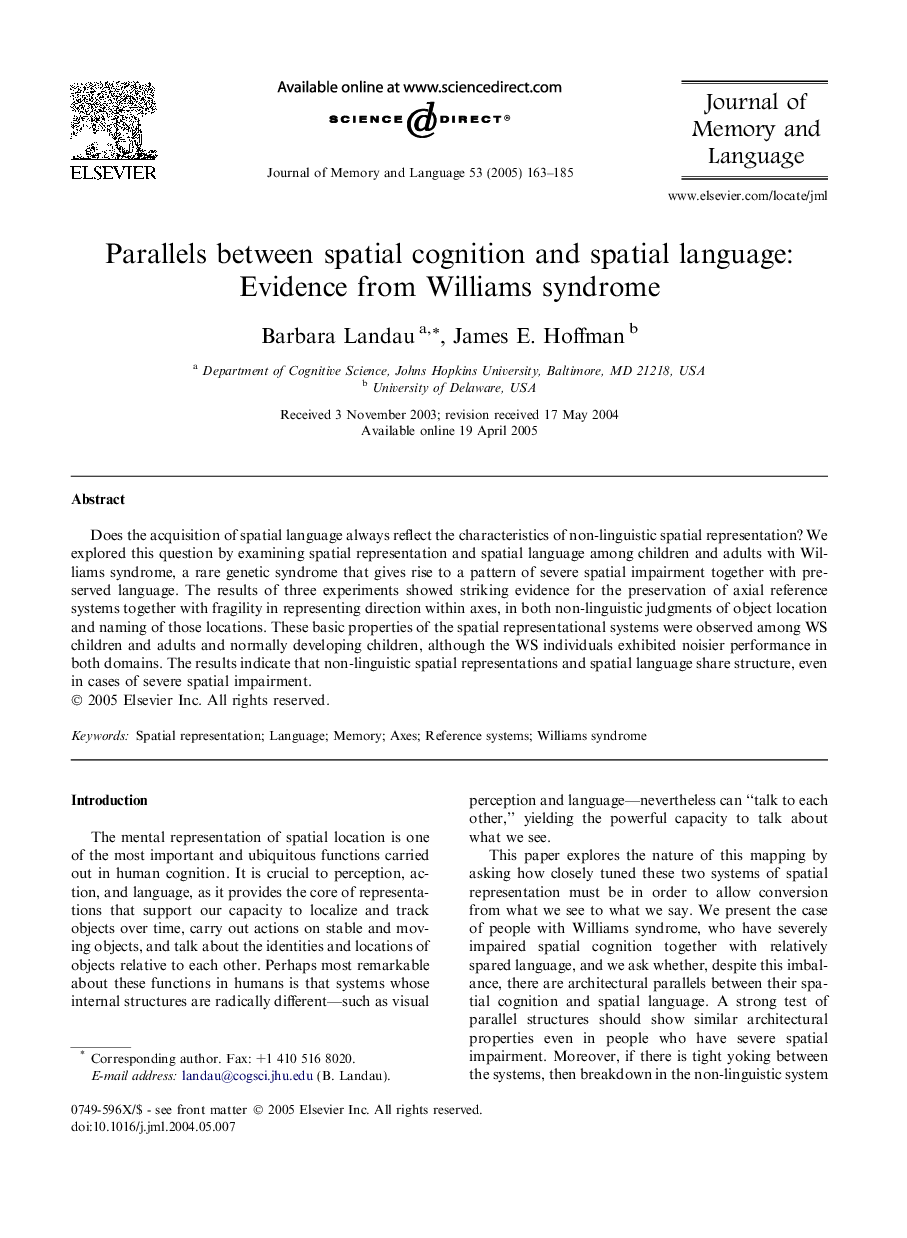| Article ID | Journal | Published Year | Pages | File Type |
|---|---|---|---|---|
| 10459797 | Journal of Memory and Language | 2005 | 23 Pages |
Abstract
Does the acquisition of spatial language always reflect the characteristics of non-linguistic spatial representation? We explored this question by examining spatial representation and spatial language among children and adults with Williams syndrome, a rare genetic syndrome that gives rise to a pattern of severe spatial impairment together with preserved language. The results of three experiments showed striking evidence for the preservation of axial reference systems together with fragility in representing direction within axes, in both non-linguistic judgments of object location and naming of those locations. These basic properties of the spatial representational systems were observed among WS children and adults and normally developing children, although the WS individuals exhibited noisier performance in both domains. The results indicate that non-linguistic spatial representations and spatial language share structure, even in cases of severe spatial impairment.
Related Topics
Life Sciences
Neuroscience
Cognitive Neuroscience
Authors
Barbara Landau, James E. Hoffman,
